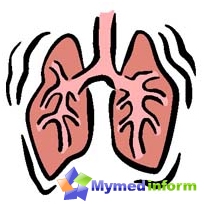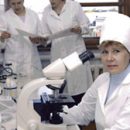Most newborn children develop intestinal colic, which are a kind of adaptation of the child's digestive system to a new nutrition. The main symptoms of the disease begin suddenly, cry appear, redness of the face, bloating.
Content
Mechanism for the development of intestinal colic
 Newborn and children of the first months of life marked functional intestinal colic. In the overwhelming majority of cases colic - not pathology (disease), and the adaptation of the gastrointestinal tract of the baby to new conditions (after all, for 9 months, the kid's digestive system is not «Worked», And the first 2-3 weeks were under the beneficial effect of maternal hormones).
Newborn and children of the first months of life marked functional intestinal colic. In the overwhelming majority of cases colic - not pathology (disease), and the adaptation of the gastrointestinal tract of the baby to new conditions (after all, for 9 months, the kid's digestive system is not «Worked», And the first 2-3 weeks were under the beneficial effect of maternal hormones).
In the first two weeks of life, the baby receives exclusively breast maternal milk. Its volume is small, so the digestion occurs quite easily. By the third week of life, the volume of milk necessary for the baby increases, and many moms in connection with the wrong application or insufficient time of the breast of milk «decrease» and baby gets more «Front milk» excessive carbohydrates that can contribute to increasing gas formation.
Colic comes from the Greek word «Colikos» - «Pain in the colon». This term indicates the paroxy stomach pains, causing discomfort, a sense of cutting or squeezing in the abdominal cavity.
Intestinal colic can be more pronounced and manifest themselves most often if:
- Breast milk is not enough and the child is remembered by a mixture
- Baby was born a little earlier
- Births were difficult
The main symptoms of intestinal colic
The main symptoms of the functional intestinal colic are the concern of the baby, the meteorism with bloating, a shrill cry, often it is accompanied by redness of the face and bringing the legs with legs. Intestinal colic most often starts at the 3rd week of the child's life, and in most cases manifests itself in the evening. First colic notes once or twice a week and lasts 15-20 minutes. Subsequently, the intestinal colic begins to repeat more and more often, it becomes more and more regular. Its duration increases, and the intestinal colic can last with short interruptions for 3-5 hours. After removal of gases or feces in abdominal pain, as a rule, we subscribe, but after a small break can renew again. Chair and appetite in children do not suffer, moreover, children, as a rule, suck and in the first time they add well in the mass.
If the intestinal colic lasts several weeks (3 or more), the other intestinal disorders (moderate diarrhea, jeeping, sometimes vomiting) begin to join (moderate diarrhea, joining, sometimes), the character of the chair is changed, the body weight gain is delayed. All this is connected with the connection of dysbacteriosis phenomena.
The secondary intestinal colic arising against the background, for example, disaccharidase insufficiency or enterocolitis, is characterized by the same main manifestations, except for the character of the chair, which changes (diarrhea prevails), and the body weight drops after the appearance of diarrhea. In addition, the intestinal colic, complicating enterocolit, can develop at any age, starting from the newborn period.









